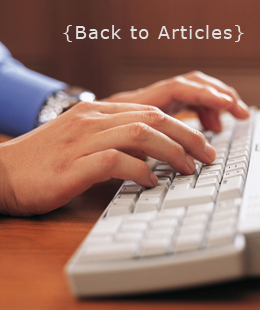 |
||||

Contact Us
|
The Visualized Opening Statement: Less Tell and More Show By William S. Bailey If Abraham Lincoln were transported by time machine from his heyday as a trial lawyer in the 1850s into a present day courtroom, he would not need any explanation on the process of a modern trial - the basic elements would be much the same as he knew them 140 years ago. This is not surprising, as the ritual of a jury trial within Anglo-American jurisprudence has remained relatively unchanged for centuries. Starting with the black robes of our judges and the Grecian temple architecture of many of our courthouses, the trial process has always strongly resembled a secular religious ceremony. In much the same way that practitioners of classical martial arts such as judo rigidly follow ancient ceremonial dances, trial lawyers follow their own preordained rites before the jury. The traditional format has become more of a horse and buggy era anachronism in the post-World War II electronic age. Despite the de facto monastery walls of legal tradition to deter ìcontaminationî by the outside, jury trials increasingly must take into account and incorporate the revolutionary shifts in the process of communication and information presentation. After all, jurors are highly motivated outsiders to the court process who are charged with making very difficult decisions, including matters of life and death. It is neither fair or appropriate to deny jurors access to information presented in the most effective way. Slavish devotion to the historical trial ritual must give way to newer and more vivid ways of information presentation. Nowhere is this need more evident than in the traditional form of opening statements at trial. THE CRUCIAL IMPORTANCE OF AN EFFECTIVE: OPENING STATEMENT Though trial practice gurus differ in many areas, there is near unanimity on the proposition that the opening statement is the most important single part of the trial. Thomas Mauet's observations in this regard are representative: The opening statement will be your first opportunity to tell the jury what the case on trial is all about. As such, it is a critical part of the trial . . . opening statements often make the difference in the outcome of the case. Studies have shown that jury verdicts are in the substantial majority of cases, consistent with the initial impressions made by the jury during opening statements. As in life generally, the psychological phenomenon of primacy applies, and initial impressions become lasting impressions. 1 The conventional wisdom about the critical importance of an effective opening statement is not mere punditry and is backed by impressive statistics. For example, the landmark study by Kalven and Zeisel showed that as high as 80% of the jurors ultimately made up their mind during opening and did not change it during trial. 2 Generally, once human beings make up their minds on a subject, later inconsistent information may affect the strength of their conviction but it will not change their mind in any fundamental sense. >>NEXT |
|||
Disclaimer | Sitemap | Contact Us | 2008 All Rights Reserved | Site Developed by Catherine Flemming | Designed by Suryn Longbotham |
||||